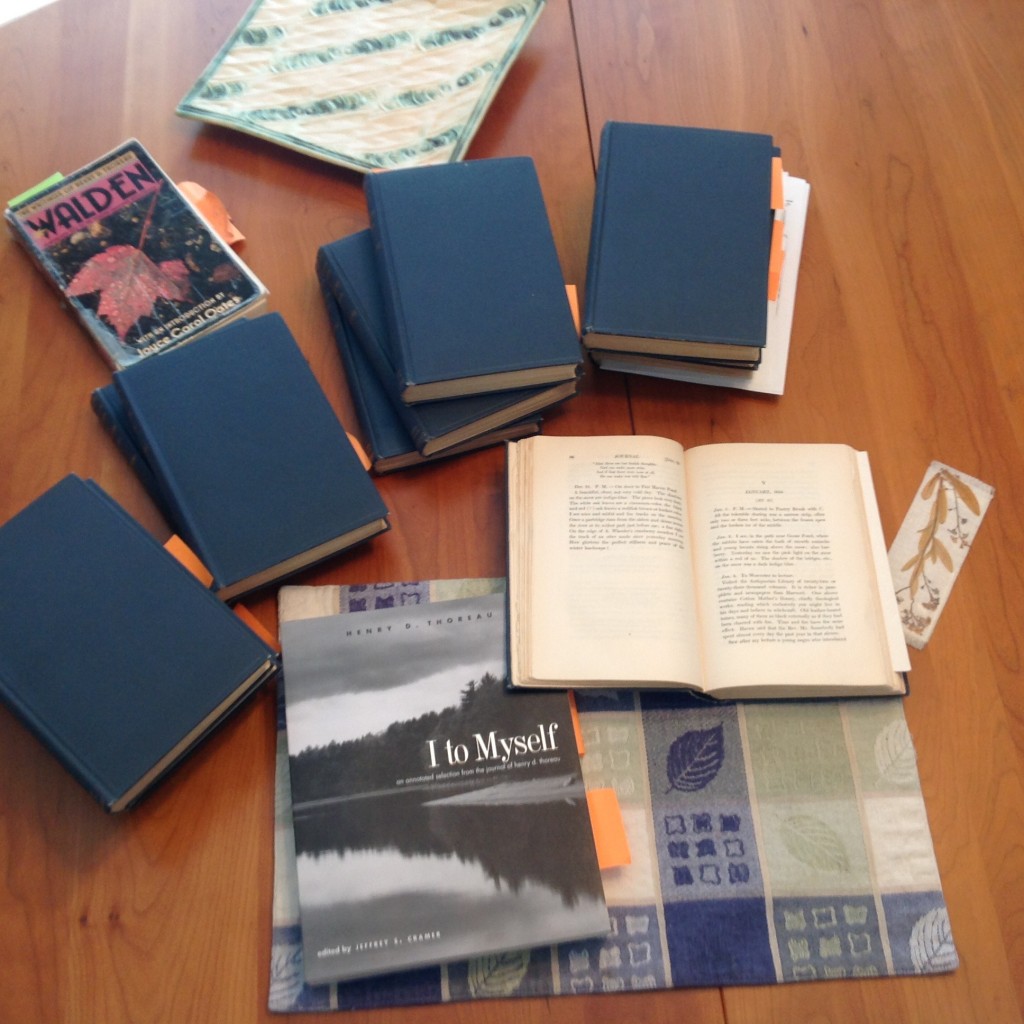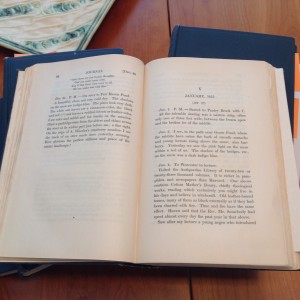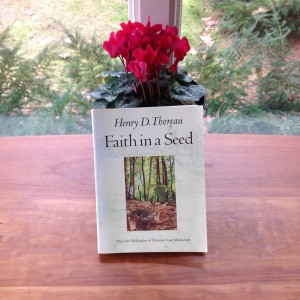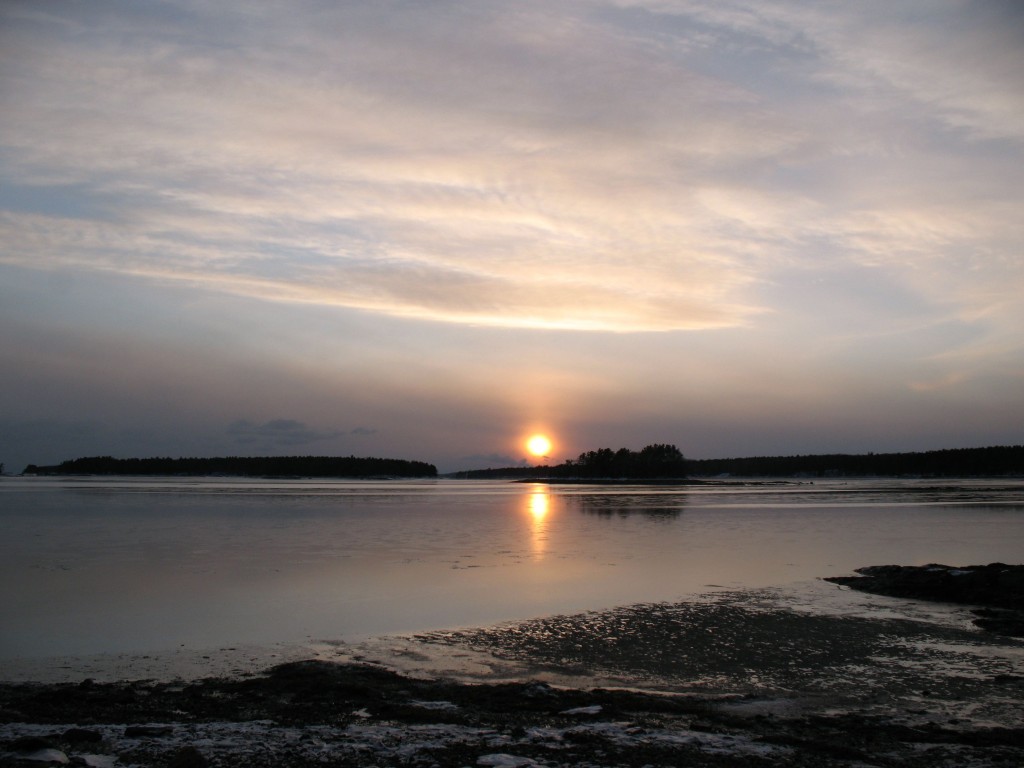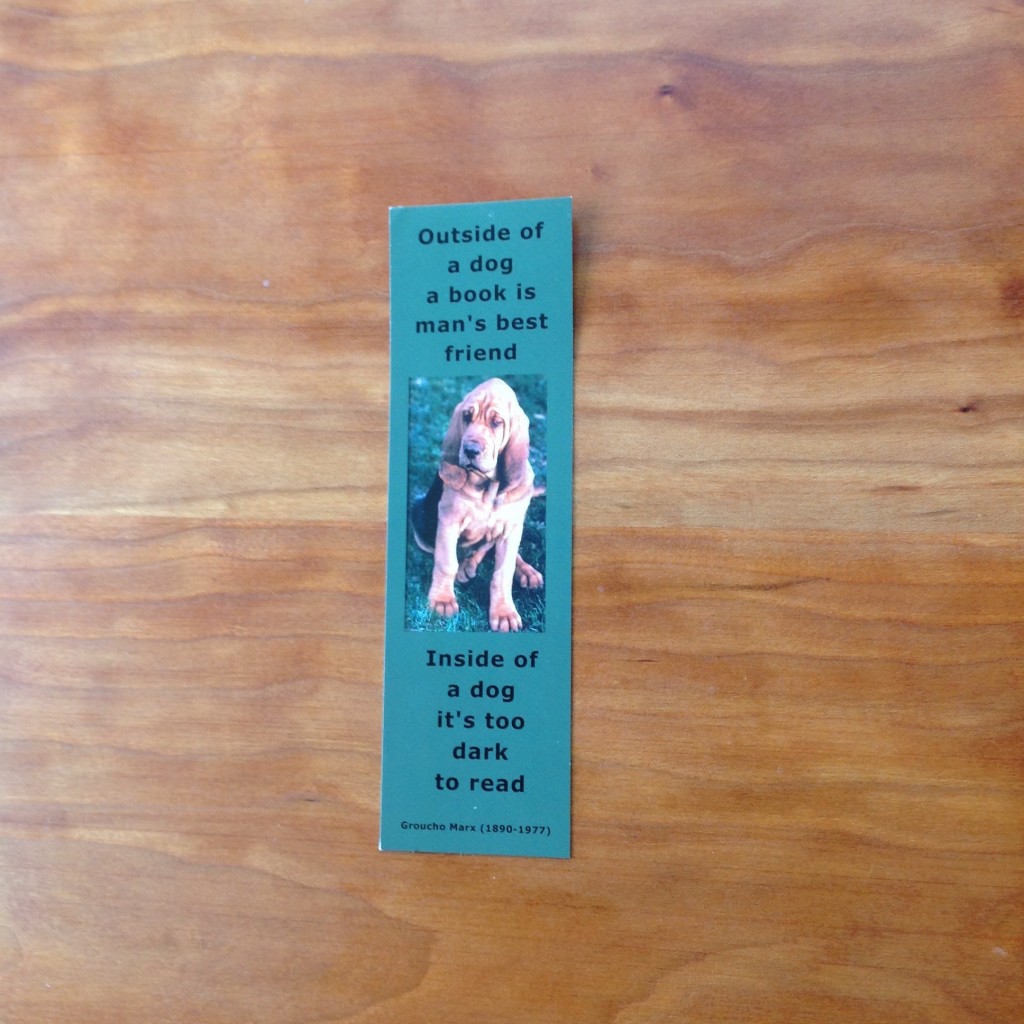It is, as the Roman god Janus is said to remind us, the time for looking backward and forward. And, for a two-faced god, or a weary human, looking one way inflects the other. In such a state it can be hard to inhabit the present. Resolution hotfoots it into the past or the future.
Enter the walking (or skating) man, Henry Thoreau, who lived the stuff of resolution – “I went to the woods because I wished to live deliberately, and front only the essential facts of life…” – but who rooted that resolution firmly in the immediate. Reduced to a somewhat inelegant phrasing, Thoreau’s life might be contained by this command: Be here fully, now.
What, I wonder, did Henry Thoreau make of New Year’s day?
I pull out all the journals and align them chronologically; I make sure too that I have my buck knife, reserved on indoor days for the opening of still-joined pages, should I encounter some. Then, I begin to leaf through the years 1850 to 1861, years of prolific output and years when Thoreau attached his journal-writing firmly to dates. Specifically, I want to see those years’ endings and beginnings. How did Henry Thoreau ring out the old and write in the new? Did he even mention something as arbitrarily imposed as a “new year?” Or was the calendrical shift seamless, unmentioned as he opened his door on simply another day, which was simply another chance to walk out into and see the world?
Page-turning (and occasional page-slicing) ensues. I work my way through this marvelous decade+ of expression, getting sidetracked sometimes by a flash of insight, an apt phrasing, a shiver of recognition.
It is just as I suspected – there’s no ringing out of old or in of new; these years (and others) are fused as neatly as uncut pages. I draw my knife along one joined set, pulling its edge smoothly, carefully toward me; the pages part. I set aside the knife, and begin to read as 1854 becomes 1855.
Both days are river-days, which is to say too they are outside days:
Dec. 31. P.M. — On river to Fair Haven Pond.
Jan. 1. P.M. — Skated to Pantry brook with C.
And one offers a near-ecstatic wheel of color, a feast for eyes. The other has a slightly grumpy tone. Sounds like the present, like everyday life to me.
Here is each in its entirety:
1/31/54: On the river to Fair Haven Pond. A beautiful, clear, not very cold day. The shadows on the snow are indigo-blue. The pines look very dark. The white oak leaves are a cinnamon-color, the black and red (?) oak leaves a reddish brown or leather-color. I see mice and rabbit and fox tracks on the meadow. Once a partridge rises from the alders and skims across the river at its widest part just before me; a fine sight. On the edge of A. Wheeler’s cranberry meadow I see the track of an otter made since yesterday morning. How glorious the perfect stillness and peace of the winter landscape!
1/1/55: Skated to Pantry Brook with C. All the tolerable skating was a narrow strip, often only two or three feet wide, between the frozen spew and the broken ice of the middle.
Just so life: one day stopped with exclamation; another day threading the tolerable between the spew and broken ice. Always present.
Best wishes to you for the immediate.

